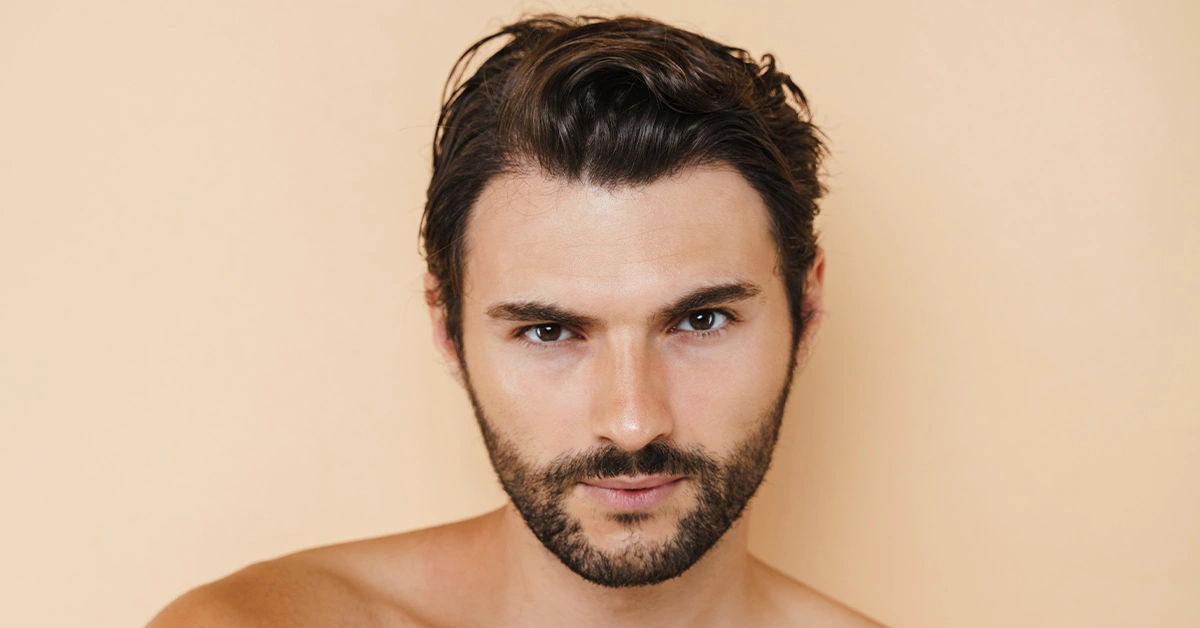Percutaneous hair transplant is a specialized method of hair transplantation in which tiny round micro-incisions are made in the recipient area to implant the hair follicles. Compared to traditional techniques, this method allows hair follicles to be implanted at more natural angles and in higher density, leading to more aesthetic and natural-looking results.
How Is a Percutaneous Hair Transplant Performed?
Procedure Stages:
Total Time: 7 hours
First Stage
Examination and Planning: The patient’s hair loss pattern is analyzed, and the donor area is identified.
Extracting Hair Follicles: Healthy hair follicles are extracted from the donor area (nape area) using a micromotor or manual punch method.
Next Stage
Creating Micro-Openings: Round micro-pores are made in the recipient area using fine-tipped blades designed specially for the Percutaneous Hair Transplant technique.
Implanting the Grafts: The collected follicles are then implanted into the circular openings at appropriate angles, ensuring a natural alignment and direction of growth.
Final Stage
Bandaging: After the procedure, the donor area is treated with antibiotic cream and bandaged.
Healing Process: The grafts begin to settle once the transplantation is complete, and the healing process is carefully monitored.
Estimated Cost: 1200 Euro
Video
You can watch a video to see the detailed steps and results of the Percutaneous Hair Transplant procedure.
Who Is Suitable for Percutaneous Hair Transplant?
This method is suitable for individuals who:
- Want a natural-looking hair transplant result
- Desire dense and high-volume implantation, especially in the hairline and frontal areas.
- Have not achieved sufficient results with traditional methods.
- Prefer a faster recovery process.
However, Percutaneous hair transplant may not be suitable for every patient. Hair structure, skin characteristics, and the condition of the donor area should be evaluated by a qualified specialist.
Advantages and Disadvantages of Percutaneous Hair Transplant
Advantages:
- Allows for denser and more compact implantation.
- Thanks to the round micro-pores, follicles anchor more securely.
- The results appear more aesthetic because the hair is implanted at natural angles.
- Healing time is generally faster compared to the FUE technique.
- Results in minimal scabbing and redness after the procedure.
Disadvantages:
- Requires a specialized technique, so it may not be available in all clinics.
- May be more expensive compared to other hair transplant techniques.
- If not performed by experienced professionals, the desired outcome may not be achieved.
Instructions Before and After Percutaneous Hair Transplant
Before the Procedure:
- Blood-thinning medications should be discontinued upon the doctor’s recommendation.
- Alcohol and smoking should be reduced.
- Proper nutrition is essential for healthy hair and scalp.
- Vitamins and minerals that strengthen hair follicles may be taken.
After the Procedure:
- The bandage is removed the day after the procedure, followed by the first hair wash.
- Avoid clothing that could irritate the scalp.
- Use the care products and lotions recommended by your doctor regularly.
- Avoid heavy physical activity, sauna, and direct sun exposure.
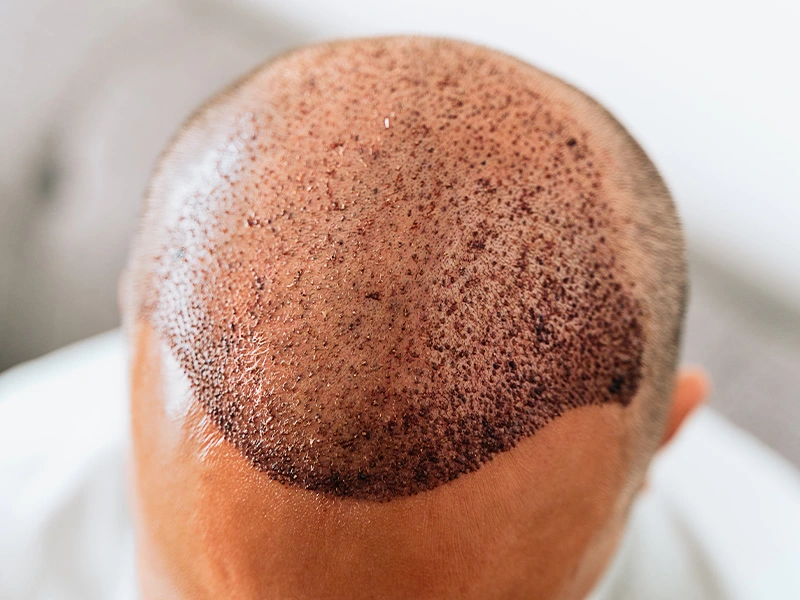
When Are the Results of Percutaneous Hair Transplant Visible?
In the first three months, the transplanted hair follicles may go through a shock loss phase, which is completely normal. From the 6th month, new hair begins to grow. Full results are usually visible within 12 months, with the transplanted hair blending naturally with existing hair.
Before and After Photos of Percutaneous Hair Transplant
Before-and-after photos of hair transplant using the percutaneous technique are valuable for assessing the procedure’s success. This method stands out with its natural-looking hairline and dense appearance. Photos based on patient experiences can help you better understand the process and expected results.
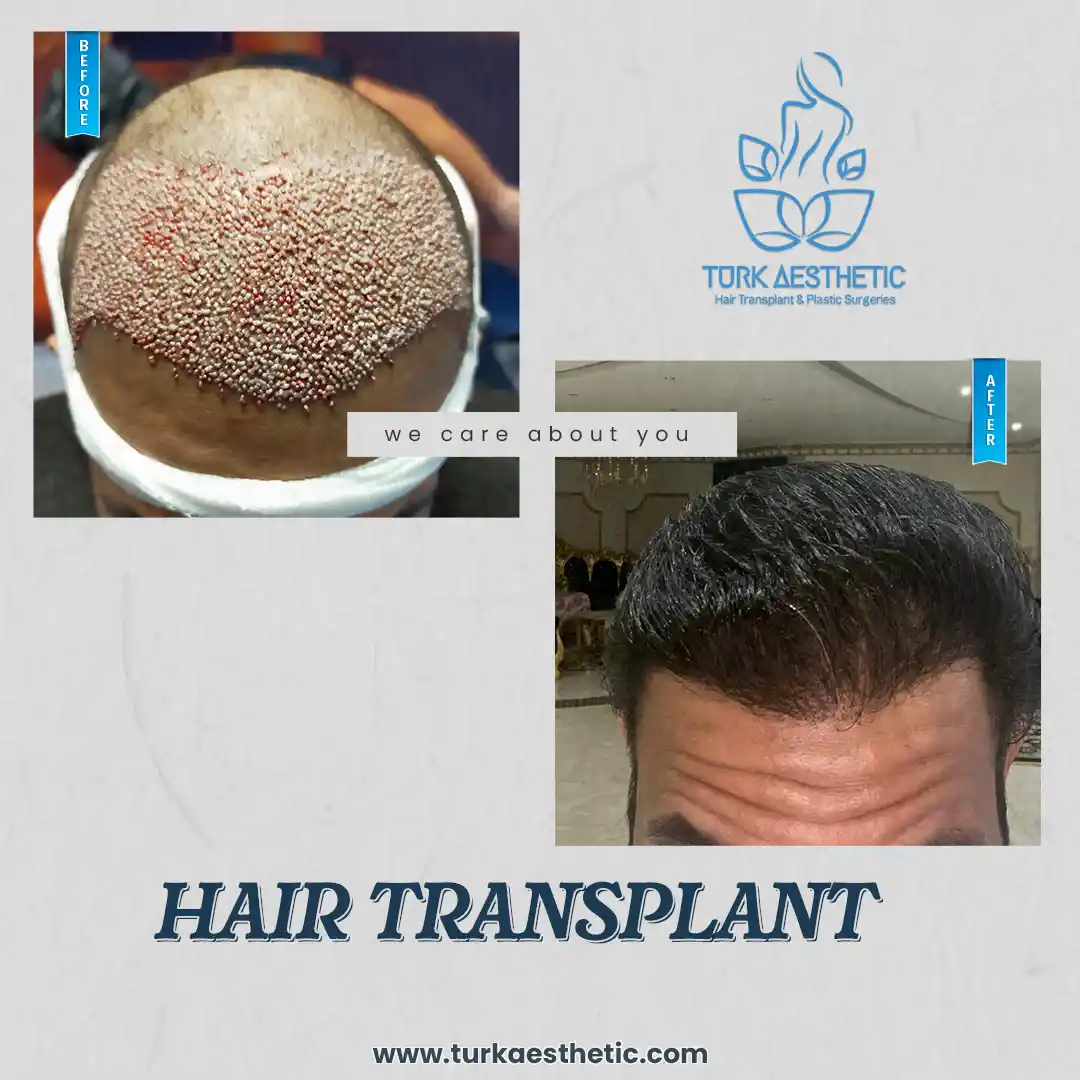
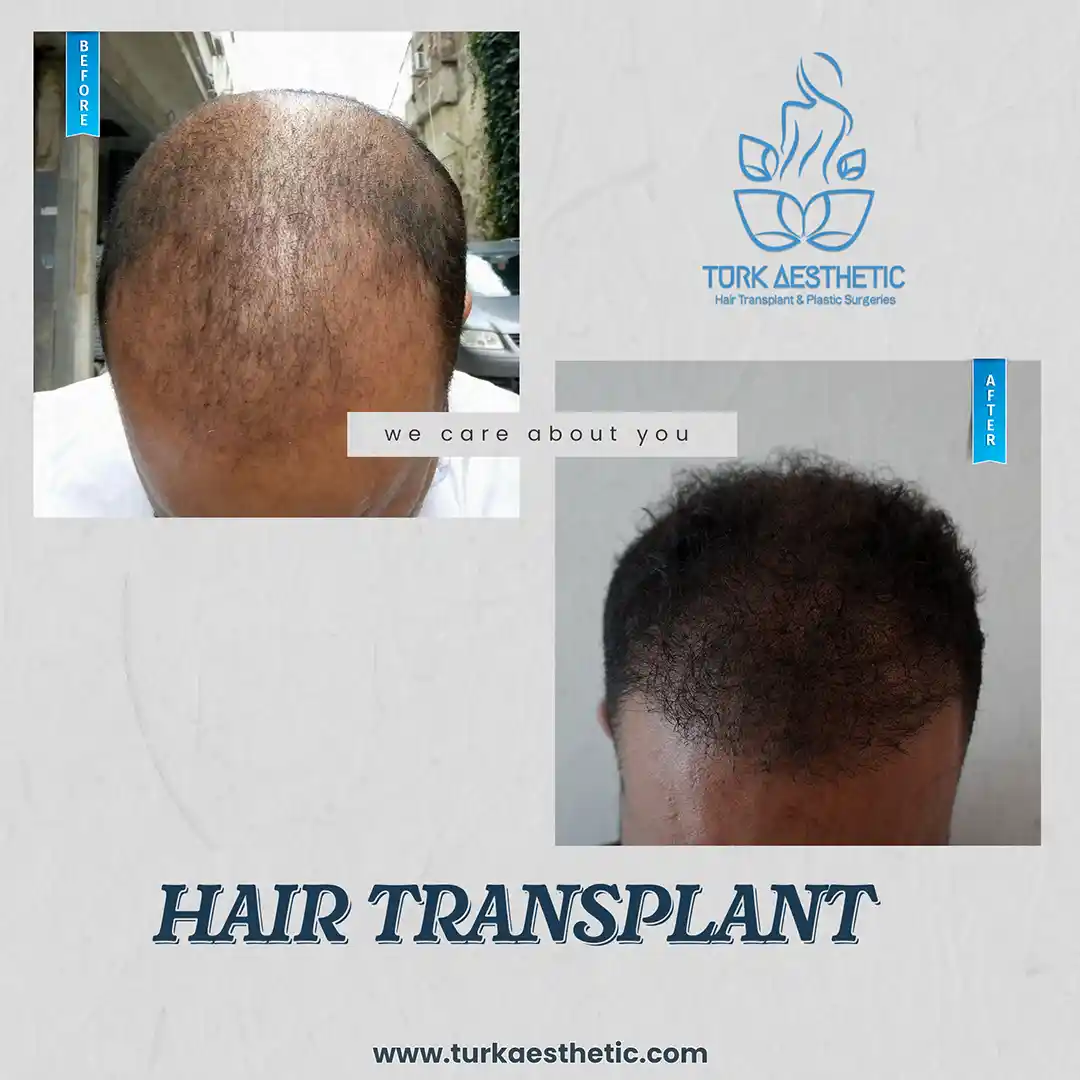
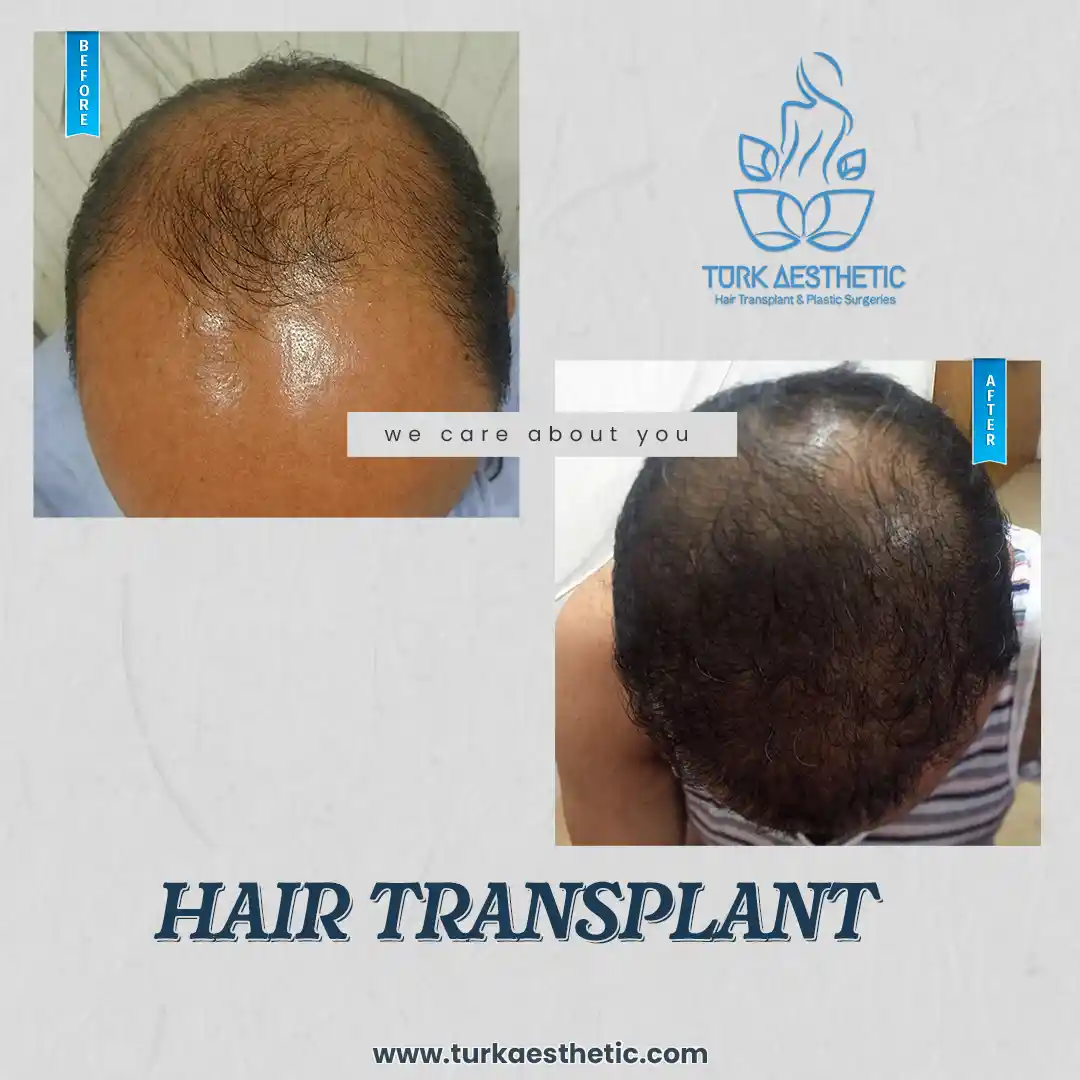
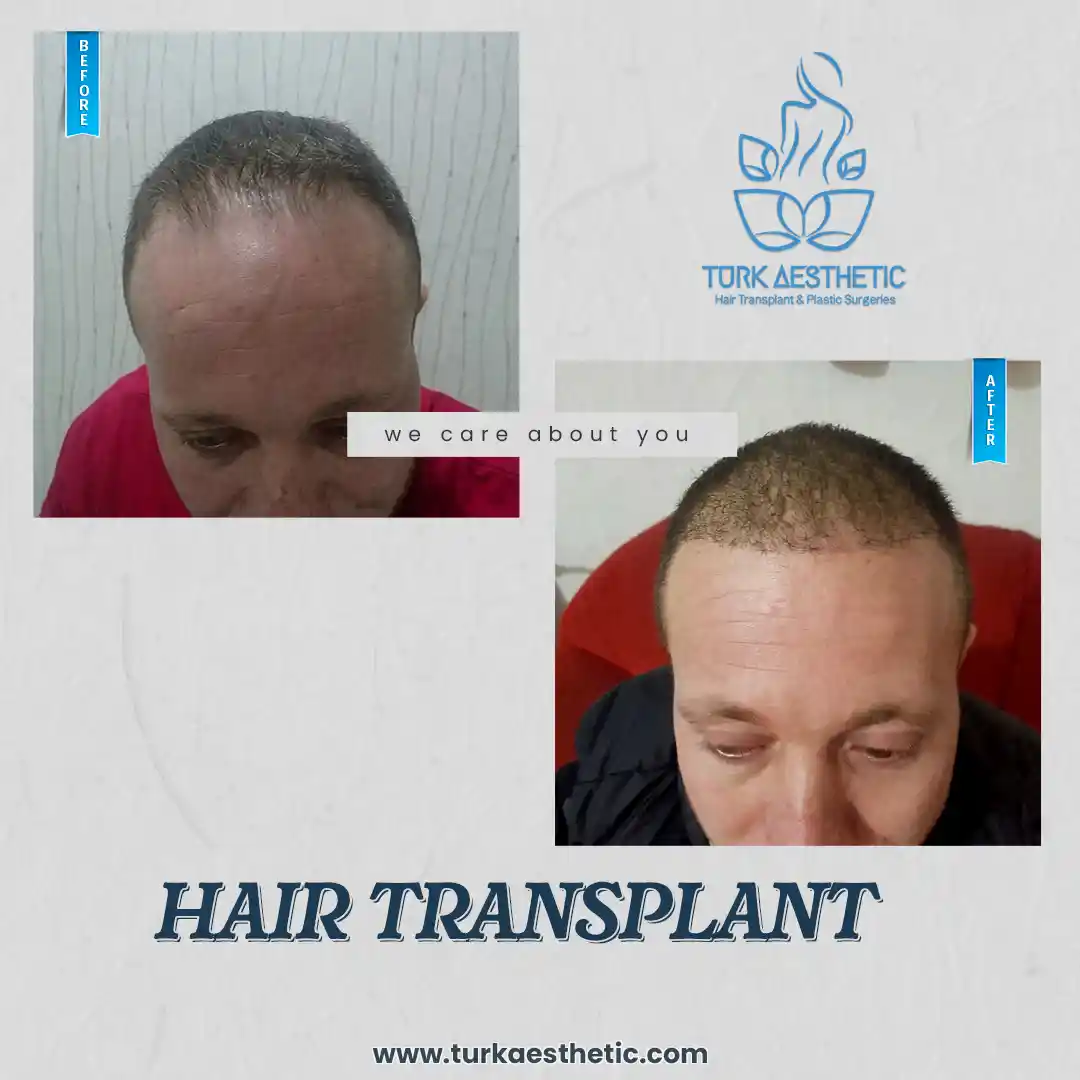
Comparison of Percutaneous Technique with FUE and DHI
Percutaneous hair transplant differs in several key aspects from FUE (Follicular Unit Extraction) and DHI (Direct Hair Implantation) methods.
In the Percutaneous hair transplant, the areas where the hair follicles will be implanted are prepared by creating round micro-pores using special blades. This allows for a denser and more natural-looking implantation. In contrast, the FUE method involves extracting grafts using a micromotor or manual punch and placing them into linear micro-pores. While FUE is effective for covering larger areas, the implantation angle may not be as natural as with the percutaneous technique.
In the DHI technique, no pores are opened beforehand; hair follicles are implanted directly using special implanter pens. This method allows for hair transplant without shaving, making it especially suitable for women or individuals who do not wish to shave their hair. However, DHI may not allow for as high an implantation density as the percutaneous technique.
When comparing healing times, the percutaneous technique typically offers faster recovery and minimal scabbing, while FUE may involve a slightly longer healing process. DHI also provides fast healing but may take more time to perform when treating large areas.
In conclusion, a Percutaneous hair transplant is ideal for individuals seeking a natural hair angle and high-density implantation, particularly in the frontal hairline and areas requiring detailed work. FUE is often preferred for covering larger areas, while DHI is the best option for those who want an unshaven hair transplant. The most suitable method should be determined based on the individual’s hair structure and personal expectations.
Percutaneous Hair Transplant Cost in Turkey, Istanbul
The cost of percutaneous hair transplant in Istanbul can vary depending on several factors. Key price determinants include the clinic’s experience, expertise in planning, the number of grafts to be implanted, and additional services such as PRP treatment or aftercare packages.
As of 2025, the average price range for Percutaneous hair transplant in Istanbul is between €1200 and €1800.
FAQ
Is a percutaneous hair transplant painful?
No, the procedure is performed under local anesthesia, so pain is not felt. However, mild discomfort may be experienced.
Is this technique permanent?
Yes, the transplanted hair is permanent and does not fall out. However, proper hair care is essential for maintaining the results.
How long does the procedure take?
The duration depends on individual needs, but it takes 6 to 8 hours on average.
Is shock hair loss normal after the procedure?
Yes, temporary shock loss can occur after the procedure. However, hair typically begins to grow back within 6 to 12 months.
When will the transplanted hair start to grow?
Hair starts to grow weakly within the first 3 months, becomes more noticeable by the 6th month, and full results are usually visible within 12 months.
Conclusion
Percutaneous hair transplant is ideal for those who want a dense and natural-looking result. Using round micro-pores ensures that follicles are implanted at the optimal angle, resulting in aesthetically superior outcomes. However, a qualified and experienced medical team must carry out the procedure.
If you’re considering a hair transplant, consult a specialist to determine whether the percutaneous technique is the right option for you.
Finally, for more information and to request a price quote, you can contact Turk Aesthetic in Istanbul, Turkey, directly via the provided link.

